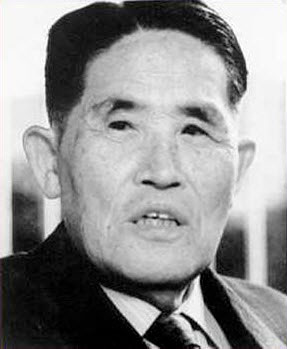In 1988, when I first met Shigeo Shingo, the creator of SMED (Single Minute Exchange of Die), he asked me if I had been using his SMED System.
I replied that I had in fact been using it in a machine shop where we had reduced changeover times from 90 minutes to 15 minutes – not bad I thought.
Dr Shingo’s reply was that when he was at school the number 15 had two digits – he was talking about single digit minutes – 9 minutes 59 seconds or less. He ended his lecture with “you must do better!”
In subsequent work teaching SMED I have always told this story, but also implied that Shingo was perhaps wrong to berate me – that the cost of taking a further six minutes off a changeover that had already been reduced by 75% could not perhaps have been cost justified – 15 minutes could have been the optimum. In fact I tended to say that the first 50% reduction is free, being mainly organisational changes, the next 25% is inexpensive, being mainly small equipment modifications but the final 20% can be expensive, necessitating major tooling changes (Shingo believed that only 5% of most changeovers comprised essential internal work which required production to be shut down).
The basic cost benefit equation is easy, although it does assume there is sufficient demand to soak up the extra production capacity. You just take the machine hours saved on changeover, convert them to sales value less cost of material and you have the extra gross margin delivered by the improvement. You can then work out how long it would take to pay back the required changes to tooling etc.
Sometimes however we are just producing not more, but a greater variety of products. We might use the same number of machine hours but produce 5 different lots instead of one. So instead of producing in weekly batches we can produce in daily batches and service the same customer demand with lower stocks – effectively we are producing every part every day instead of every part every week (the EPE interval). What is reducing here is not COGS (cost of goods sold) but Inventory Carrying Cost (ICC). Inventory carrying cost is notoriously hard to quantify, but the chances are that you are underestimating it.
A consensus estimate would be that the cost of carrying inventory is about 22% of the value of the material per annum. This is just the financial cost, before we start thinking about the physical costs of storage i.e. warehousing. But theoretically we could still come up with a cost benefit equation even if we were just increasing flexibility rather than producing more end product.

More than 20 years on from when I first met Shingo, who died in 1990, I think he may have had a point in not allowing me to be happy with a 75% changeover reduction. Just as the point of One Piece Flow is not to make batches of one, rather that any number is divisible by one, so we can make a batch of however many the customer wants, so the point of SMED may not be to search for the optimum balance between production and changeover time, but to continually challenge our assumptions of what is possible, thus increasing our options to respond to changes in the market for our products.
In TPM we target Zero Losses, in Lean we target Zero Waste and in Six Sigma we target Zero Defects – although Six Sigma is perhaps the only one of the three which allows a non zero target – 3.4 defects per million! I think of these zero targets as goals to be approached without limit – we don’t assume in our budgets that we will achieve them, but without a zero target we put a limit to our potential for improvement.
Perhaps this is what Dr Shingo was trying to tell me – 75% is a good try, but it is not perfect and we should always be striving for perfection, rather than striving to justify why our current level of improvement is good enough: “You must do better!”
Malcolm Jones
Productivity Europe

